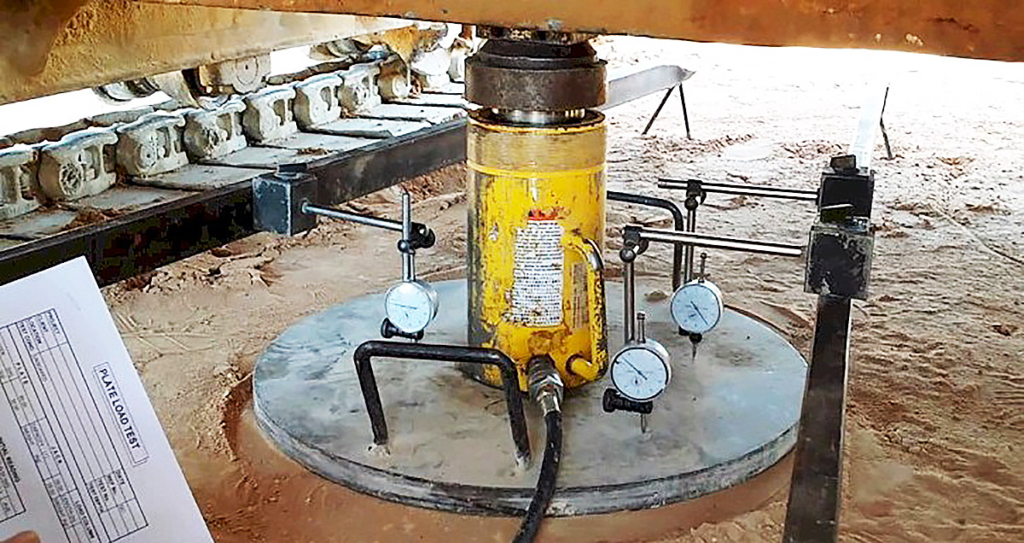
Here’s a comprehensive explanation of the plate load test:
What it is:
- A field test used in geotechnical engineering to determine the bearing capacity and deformation characteristics of soil.
- Involves applying a gradually increasing load to a rigid steel plate placed on the ground surface and measuring the resulting settlement.
- Provides valuable data for designing shallow foundations, pavements, and other structures that bear on the soil.
Purpose:
- To determine the ultimate bearing capacity of the soil, which is the maximum load it can support before failure.
- To estimate the settlement of a foundation under a given load.
- To assess the suitability of the soil for construction.
- To determine the modulus of subgrade reaction (k), which is a measure of the soil’s stiffness.
- To evaluate the effectiveness of ground improvement techniques.
Procedure:
- Site preparation:
- Level the ground surface.
- Excavate a shallow pit if the test is to be conducted below grade.
- Plate placement:
- Position a rigid steel plate of known diameter (typically 300-750 mm) on the prepared ground.
- Loading frame setup:
- Install a loading frame over the plate, capable of applying a vertical load.
- Instrumentation:
- Attach dial gauges or displacement transducers to the plate to measure settlement.
- Set up a load cell to measure the applied load.
- Load application:
- Apply load in increments, usually doubling every increment.
- Record load and settlement readings at each increment.
- Load holding:
- Maintain each load increment until settlement stabilizes.
- Unloading:
- Gradually reduce the load to zero.
Data analysis:
- Plot a load-settlement curve.
- Determine the ultimate bearing capacity from the curve.
- Calculate the modulus of subgrade reaction (k).
- Analyze the results and draw conclusions about the soil’s bearing capacity and settlement characteristics.
Advantages:
- Relatively simple and quick to perform.
- Provides direct in-situ measurements of soil behavior.
- Can be used to test a wide range of soil types.
Limitations:
- Only tests a small volume of soil, so results may not be representative of the entire site.
- Can be affected by soil disturbance during test preparation.
- Requires experienced personnel to conduct and interpret the test correctly.
